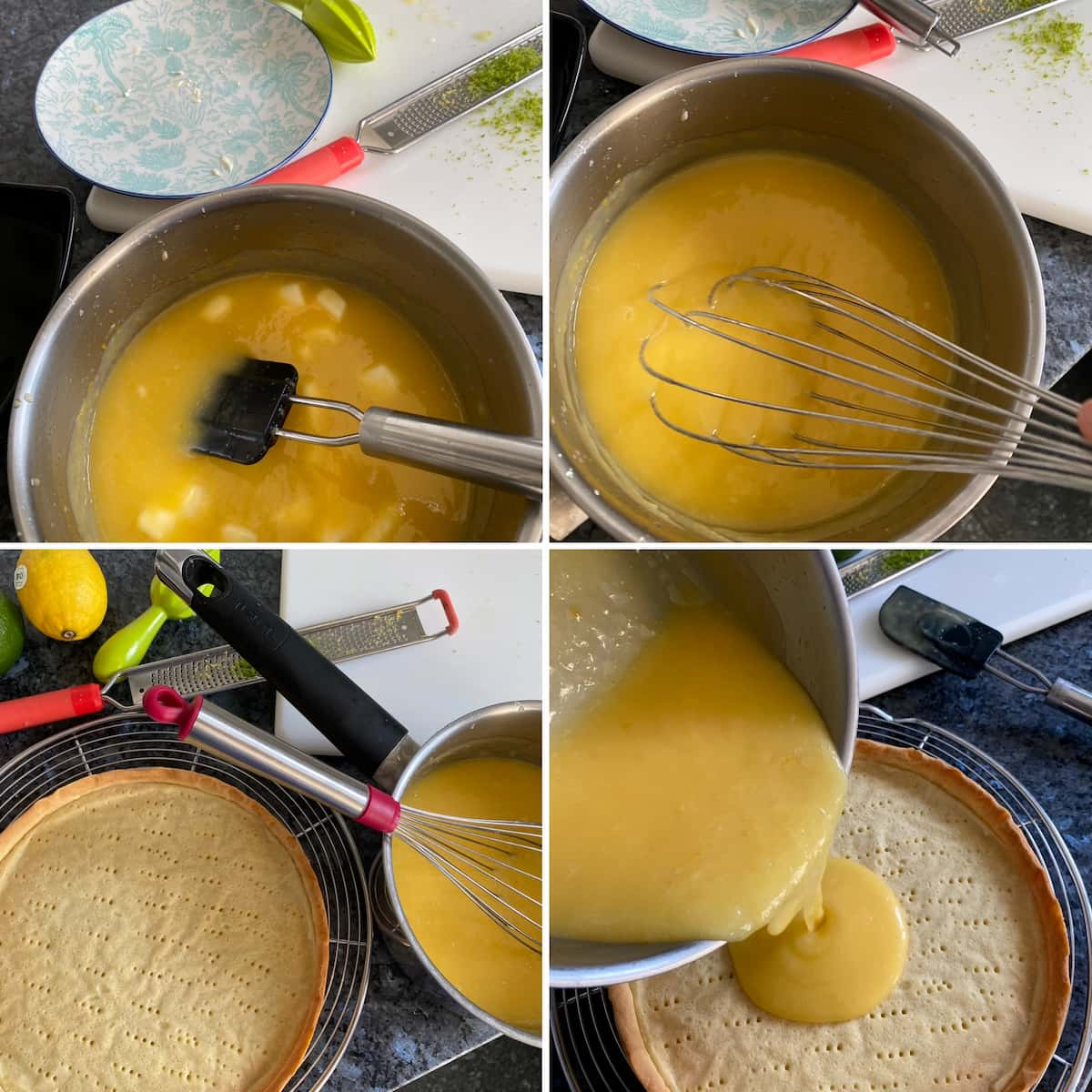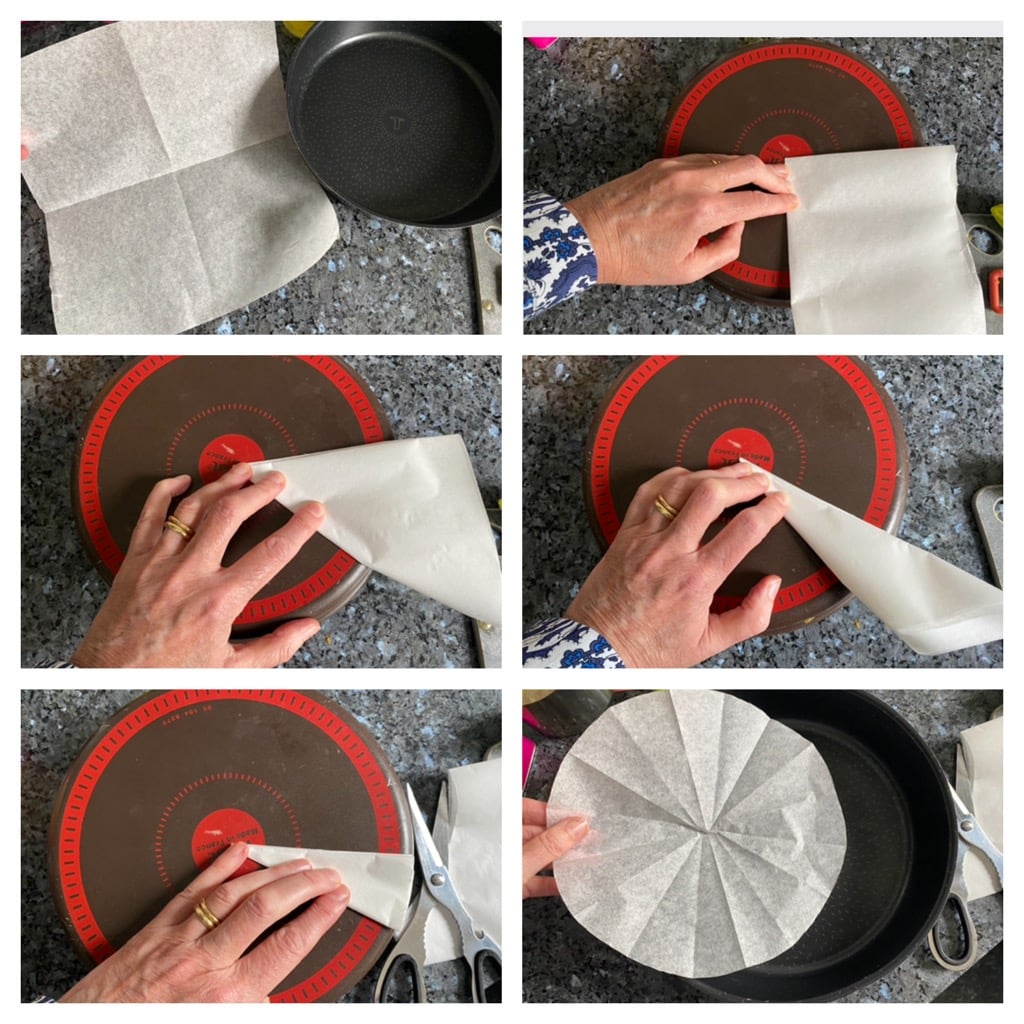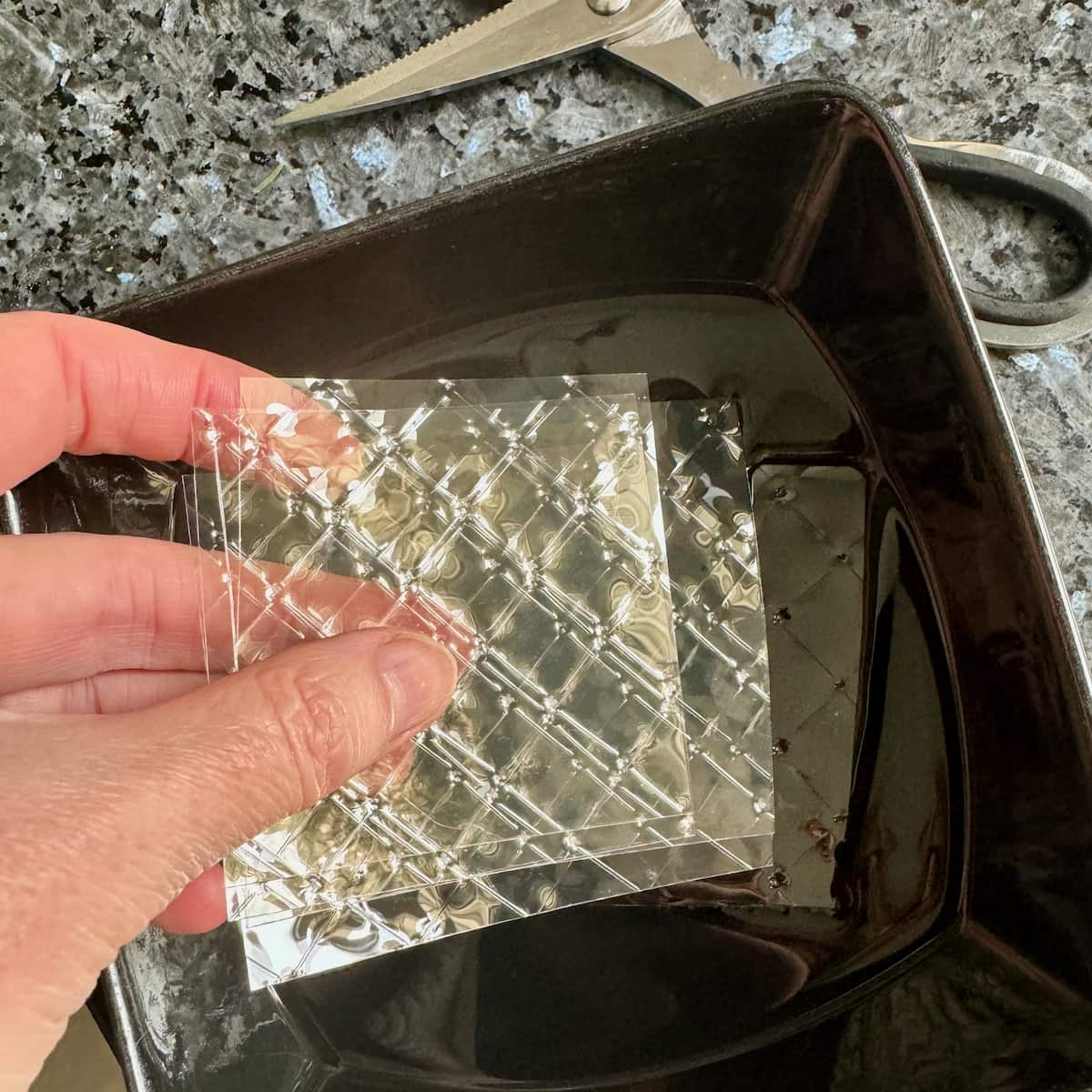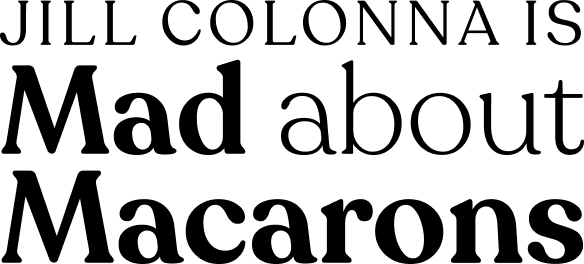Answers to your Frequently Asked Questions (FAQs), mainly around French baking terms, methods and ingredient differences for baking in France.
See below for oven temperature conversions in Fahrenheit to Celcius.
If you have a question that's not answered, please contact me and I'll add your queries or topics not yet covered in this list.

General Frequently Asked Questions
Why are French recipes in grams and ounces?
Although I have added measurements in cups for my American readers, please note these are there purely as a guide. I strongly urge you to bake and cook using grams like the French by WEIGHT, not volume (cups) - particularly for making macarons, tarts and other French pastries which need to be precise. This achieves consistent successful results in your cooking and baking.
Digital scales are inexpensive and an essential item in your kitchen. If you’re used to ounces, with digital scales you can simply switch the button over to grams and we’re all talking the same language.
For much more in detail, see my post explaining why I recommend digital scales.
How do I turn plain flour to self raising?
For 150g (6oz/1 cup) plain flour, add 2 teaspoons of baking powder and combine them well together. I prefer to use plain flour and make my own, as it reduces the amount of flour I have in the kitchen at one time. I use this method in cheese scones, banana bread and banana oat muffins, for example.
How do you line a cake tin?
Lining a round cake tin is simple with just baking parchment and scissors. There's no need to measure its size to fit perfectly:

- Cut out a square of parchment/baking paper that can fit the cake tin (turn it upside down to see the circumference best)
- From the centre of the tin, fold the paper in half - then in half again, half again twice until you have a thin triangle
- Then with scissors, cut the end of the paper triangle to go around the edge of the tin
- Open the paper out to a perfect circle that fits your cake tin.
What can I use to replace buttermilk?
No buttermilk? No worries! Just add some lemon juice to whole milk, wait for 20 minutes at room temperature and proceed with the recipe. Works great in this cheesy cornbread.

What's the size of your standard loaf tin?
I use a standard French tin for banana nut bread or chocolate marble cake:
26x10x6cm (10x4x2 inches) or UK 23x12cm (13x5 inches). Also works well with a square or round 23cm/13inch tin. If shallower than 6cm/2inch, then it will take less time to bake.
What's best to grease a cake tin or muffin mould?
I usually use non-stick baking tins where possible or even silicone for baking cakes that don't take that long in the oven so greasing isn't always necessary. However, if you have classic tins that need to be greased for the best results, I recommend greasing cake tins with butter.
Please avoid shortening and baking oil sprays becoming so popular. If you wouldn't directly cook with it, then don't bake with it. The taste is, in my opinion, not good and French nutritionists and scientists confirm that's it's also not good for our health.
How much vanilla extract for a pod/bean? Best Vanilla to Use
A vanilla bean/pod is preferable for many recipes – but are expensive. I often cheat and buy cheaper vanilla and steep them in rum in a jar to swell them – for more, see my tip how to store vanilla beans.
If you prefer to use extract or powder (ground vanilla), then use it quite sparingly depending on the brand you use. I say use a teaspoon but taste the custard first. If it needs more, add more but better to dose carefully as, if you add too much, you can’t go backwards! Some brands need more – (e.g. see Nielsen Massey’s instructions); others less for ground vanilla powder. For extract, I recommend 'Simply Organic'.
I don't recommend artificially flavoured imitation aromas or flavourings, as the resulting taste is synthetic.
What cooking oils are bad for you?
Cooking oils like canola (also known as rapeseed) is best to bake and cook with. Likewise, rape seed (huile de raisins) and sunflower oil are also healthy neutral oils.
However, be very wary of using coconut oil. It is often misunderstood as being healthy but, according to French nutritionists (such as Jean-Michel Cohen), it's actually bad for you if consumed on a regular basis. Much that the flavour is good (neutral), it's to be used on occasion only as it contains so much saturated fat. That's why coconut oil solidifies when cool. So use sparingly!
I'm allergic to gluten. Do you have any recipes for me?
Absolutely! See my collection of over 100 gluten free recipes. There are also low gluten recipes, which can be adapted easily to be made gluten free by replacing the regular flour with cornflour/cornstarch or rice flour, for example.
My macarons have cracked. What can I do?
Don’t throw them away! They will still taste delicious. I have plenty recipes you can crush them up or use them to make:
- macaron tiramisu
- mini Ispahan macaron trifles or
- macaron berry trifle
- baked peaches
- crush them and decorate on a Bourdaloue tart
As for the cracked macarons, it’s included in a troubleshooting section in my book, Mad About Macarons. Many are easy to solve – it could be just down to your oven or even your egg whites!
Can I share a recipe?
I would be delighted for you to share!
However, the recipes and images on the website are ALL copyright Jill Colonna. If you wish to link to the recipes on the site, then please contact me with credit to Jill Colonna at MadAboutMacarons.com.
For the recipes in the books, Waverley Books by law has the copyright and license to publish them, so they are uniquely in the books. If you wish to use a recipe from either book, please contact Liz Small at Waverley Books (info(at)waverley-books.co.uk) first for permission. Many thanks!
What's the difference between a macaron and a macaroon?
Ever since my pastry and chocolate tours in Paris, I have had this question so many times I wrote an article on it in detail:
I'm a bookshop/trade customer. How do I order your books ?
Please contact my publisher, Waverley Books (The Gresham Publishing Company Ltd.), directly: info(at)waverley-books.co.uk or their UK distributors at BookSource.
For orders or enquiries Tel: +44 (0) 845 370 0067 or via Gardeners Books Wholesalers
Distributor for USA/Canada: Interlink Publishing.
Distributor in France: OLF via Relay H.
A question not answered here?
Contact me either via the Contact Form or by email jill(at)madaboutmacarons.com or directly under the relevant (recipe) post where I’ll be happy to answer you as soon as I can. Don’t forget I live in France so allow for the time difference.
Ingredients and US/UK Equivalents in France
All-purpose flour and cake flour - what are they in France?
All-purpose flour in France is called T45 or T55. It doesn't contain any rising agents like in self-raising flour. While T55 is the equivalent of all-purpose flour, it's generally used in most French baking for crêpes, butter cookies, canelés and brioche. T45 is slightly finer pastry flour and the equivalent of American cake flour or Italian '00' flour and best used for making pâte sucrée, the classic sweet pastry dough for tarts (see Bourdaloue Tart and French Apple Custard Tart.)
Please check the sell-by date on flour. We've all done it - using out of date flour thinking it would be ok but it results in an unpleasant aftertaste. Especially for nut flours (chestnut, coconut or almond flour/ground almonds) which leave a rancid, bitter taste.
Do I need to sift flour?
During our grandparents' and parents' generations, sifting regular plain flour was necessary to take out any lumps for baking smoothly. These days there's no need for all-purpose or cake flours and, unless I state otherwise, don't sift.
However, for thicker flours such as chestnut flour, almond flour (ground almonds) and more nut flours, I precise in each recipe to sift as they are more inclined to 'cake' up.

What's French 'cassonade' sugar in English?
Known in France as Cassonade, sucre de canne or sucre roux, this is natural raw brown cane sugar. It's a hard, unrefined, crystallised sugar, which is free-flowing and granulated so doesn't clump together. It adds a slight rum, vanilla and caramel flavour to your recipes (e.g. French toast and cookies). Although related, it's not the same as soft brown sugar.
What is gelatin (or gelatine) made of?
Gelatin (or gelatine) is made of animal collagen, a protein extracted from the bones and skins of some animals.
It's either in powder or sheet form that needs to be first soaked in cold water to gelify desserts (sheets for 10 minutes then squeezed of excess water; powder stirred in the water for 2-3 minutes). Thereafter, this is added to a hot liquid to dissolve. Once chilled, it gels. Used for panna cotta and bavarois desserts.

What is so different about French butter?
I use good quality classic unsalted French butter known as ‘beurre doux’, with 82% fat. Why unsalted? As it’s easy to control the amount of salt used in the recipes.
In Brittany, for example, we typically use salted butter (beurre salé or demi-sel) with around 3% salt content for authentic recipes such as Palets Bretons, salted caramel sauce (caramel au beurre salé) and in the filling for salted caramel macarons. As I know it’s not often easy to find good French salted butter in the rest of the world, I use unsalted butter and add fleur de sel salt in order to get the closest possible.
So to get as close to our French recipes, please use European-style unsalted butter with 82% fat.
What size of eggs do you use in France? Is a medium egg the same in Europe and USA?
While many recipes don't require precise cooking, I just call for, say, 2 medium eggs. In general, I use medium eggs in my recipes but I'm aware that egg sizes vary around the world.
Here in France, according to the French Ministry of Agriculture, a medium egg = 53g-63g; a large egg = 63-73g which is the same size in both Europe and the UK. Conversely, in the USA, its equivalent is a large egg.
If a recipe is particularly precise, then I call for the weight in grams/ounces, but that's more for egg whites (e.g. chocolate mousse). Otherwise, for many of the recipes where it's not precise, it doesn't matter if it's a few grams' difference.
How many grams are in one egg white?
As weights of eggs vary, this is approximate, hence why we prefer to weigh egg whites in grams or ounces for consistent baking/cooking. One egg white of a large egg is about 35g (1 tablespoon). See egg white recipes.
For example, 3 egg whites = 100g/3.5oz; 4 egg whites = 140g/5oz (see Layered Chocolate Cake); 6 egg whites = 200g/7oz.
What are French cream equivalents?
In France, I generally use crème fleurette, which has at least 30% fat. This makes it our equivalent of US heavy cream and UK whipping cream, as we whip it and use it for just about everything. For many recipes (e.g. strawberry clafoutis) I use the half fat crème fleurette version.
For crème fraîche, we also have full fat and half fat versions. For the most simple, best equivalent, replace with Greek yoghurt e.g. Asparagus puff pastry tart.
For more, see the glossary of French/UK/USA terms.
Is ground almonds the same as almond flour?
Absolutely! As I’m British-French, I may use words a bit different if you’re in America. No worries, just refer to the Glossary of UK – USA baking terms if you’re not sure. I give our equivalents in France for UK and USA terms. Still can’t find what you’re looking for? Contact me.
Popular Questions about Paris
I'm coming to Paris. Do you give cooking classes?
At present, I’m completely on my own without a team to help as I’m working hard for you on this website to share my recipes for free as well as many updated Paris food guides. As a result, I have no extra time to give classes.
However, I am making free demonstration videos on my YouTube channel. So please do pop in and support me there by liking and subscribing.
For macarons, get my books! My macaron classes are detailed step-by-step in my first book, Mad About Macarons also in the macaron chapter and much more in Teatime in Paris.
In Paris, can I still enjoy pastries with food allergies?
Luckily Paris is becoming more aware of the rise in food allergies. Here are the main ones:
- Pâtisseries for Diabetics in Paris – see my article on 4 boutiques in Paris.
- Gluten free pâtisseries: Chambelland, Maison Plume (Marais), and Helmut Newcake on weekends at Didier Fourreau near the Arc de Triomphe.
What restaurants do you recommend in Paris?
While I only mention some of our favourite Paris restaurants in individual recipe posts and on social, I instead recommend our best tea rooms and pâtisseries in the City.
How do you eat all that food and pastries and stay slim?
I get this a lot. I should have written a whole book about it – although I so have a chapter on this in my 2nd book, Teatime in Paris!
Since arriving in France in 1992, in 30 years I have never needed to diet, just by sticking to the French way of eating. French people are healthy in general, as they tend to make meals from scratch with smaller portions - these pastries, croissants and cakes are occasional treats.
Don’t believe the myth that in France we always cook with butter. Read my daughter’s article on Five Ways to Eat Like the French.
Basically we stick to the 3 mealtimes (including one main meal with moderate portions) and never snack or graze. If I have the occasional tea and patisserie in the afternoon it’s officially goûter but will therefore have an even lighter lunch.
I also walk a LOT when I can instead of driving or taking the metro, take the stairs and walk about 5km a day, time permitting.
Most importantly, I avoid processed foods and eat fresh whenever possible - it has more flavour! That’s why I share my recipes here, to show that it’s easy to cook and bake from scratch.
Oven Temperatures Celsius to Fahrenheit
We all have different ovens. Whether yours is a traditional Fahrenheit (°F) or a fan oven in Celsius (°C), here are the equivalent temperatures. It includes equivalent temperatures for older ovens with a gas mark.
| Fan ºC | Fan ºF | Gas mark | Normal oven ºC | Normal oven ºF |
|---|---|---|---|---|
| 120 | 250 | 1 | 140 | 280 |
| 130 | 270 | 2 | 150 | 300 |
| 140 | 280 | 2 ½ | 160 | 320 |
| 150 | 300 | 3 | 170 | 350 |
| 160 | 320 | 4 | 180 | 360 |
| 170 | 340 | 5 | 190 | 375 |
| 180 | 360 | 6 | 200 | 400 |
| 190 | 375 | 6 ½ | 210 | 410 |
| 200 | 400 | 7 | 220 | 425 |
| 210 | 410 | 8 | 230 | 450 |
UK-US and French Baking Terms
Confused with the difference between plain flour, whipped cream or powdered sugar from France, USA or in the UK?
I have your frequently asked questions covered in this listing of UK-US Glossary of Terms. It includes ingredients with their French equivalents - so, hopefully this way we can be speaking the same baking language.
